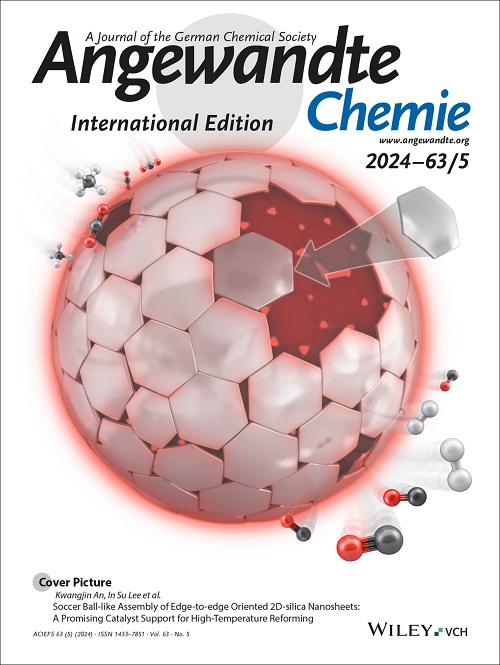Construction of slide-ring polymers based on pillar[5]arene/alkyl chain host−guest interactions
IF 16.1
1区 化学
Q1 CHEMISTRY, MULTIDISCIPLINARY
引用次数: 0
Abstract
Slide-ring polymers exhibit distinctive mechanical properties, making them highly promising for applications in emerging fields such as energy storage devices and smart sensing. However, existing slide-ring polymer systems primarily rely on hydrophilic-hydrophobic interactions to achieve ring-axle interlocking in aqueous phases. This reliance limits the construction of slide-ring networks mainly to water-soluble polymers, excluding a diverse range of lipophilic polymers. Therefore, it is crucial to introduce efficient construction strategies that facilitate interpenetration in organic solvents, enabling the development of diverse slide-ring polymers and expanding their range and applications. Herein, by utilizing the pillar[5]arene/alkyl chain host−guest interactions, we successfully facilitated the interpenetration of a pillar[5]arene and poly(caprolactone), enabling the efficient construction of two slide-ring polymer networks in organic solvents. One of these two slide-ring polymers demonstrates a unique network deformation mechanism along with outstanding mechanical properties compared with the control covalently cross-linked polymer network, including maximum stress (4.43 vs 1.98 MPa), maximum strain (1285 vs 330%), and toughness (35.4 vs 3.92 MJ/m3). More importantly, this strategy of making slide-ring polymers is highly versatile, given the wide range of macrocyclic arenes and alkyl chain-containing polymers it can accommodate.基于支柱[5]炔/烷基链主-客相互作用构建滑环聚合物
滑环聚合物具有独特的机械特性,因此在储能设备和智能传感等新兴领域的应用前景十分广阔。然而,现有的滑环聚合物系统主要依靠亲水-疏水相互作用来实现水相中的环轴互锁。这种依赖性使滑环网络的构建主要局限于水溶性聚合物,而不包括各种亲脂性聚合物。因此,引入能促进有机溶剂互穿的高效构建策略至关重要,这样才能开发出多样化的滑环聚合物,并扩大其范围和应用。在此,我们利用柱[5]炔/烷基链的主-客相互作用,成功地促进了柱[5]炔和聚己内酯的互穿,从而在有机溶剂中高效地构建了两种滑环聚合物网络。与共价交联聚合物网络对照组相比,这两种滑环聚合物中的一种具有独特的网络变形机制和出色的机械性能,包括最大应力(4.43 比 1.98 兆帕)、最大应变(1285 比 330%)和韧性(35.4 比 3.92 兆焦耳/立方米)。更重要的是,这种制造滑环聚合物的策略具有很强的通用性,因为它可以容纳多种大环芳烃和含烷基链的聚合物。
本文章由计算机程序翻译,如有差异,请以英文原文为准。
求助全文
约1分钟内获得全文
求助全文
来源期刊
CiteScore
26.60
自引率
6.60%
发文量
3549
审稿时长
1.5 months
期刊介绍:
Angewandte Chemie, a journal of the German Chemical Society (GDCh), maintains a leading position among scholarly journals in general chemistry with an impressive Impact Factor of 16.6 (2022 Journal Citation Reports, Clarivate, 2023). Published weekly in a reader-friendly format, it features new articles almost every day. Established in 1887, Angewandte Chemie is a prominent chemistry journal, offering a dynamic blend of Review-type articles, Highlights, Communications, and Research Articles on a weekly basis, making it unique in the field.

 求助内容:
求助内容: 应助结果提醒方式:
应助结果提醒方式:


